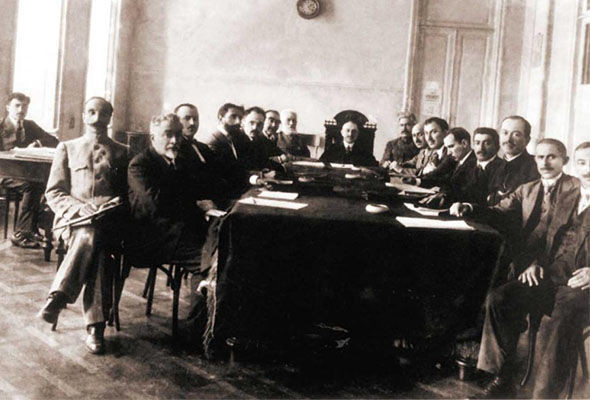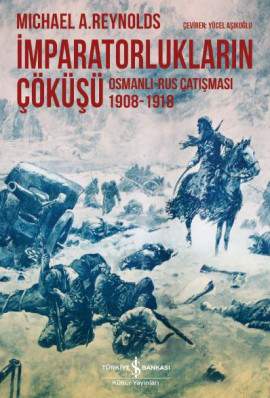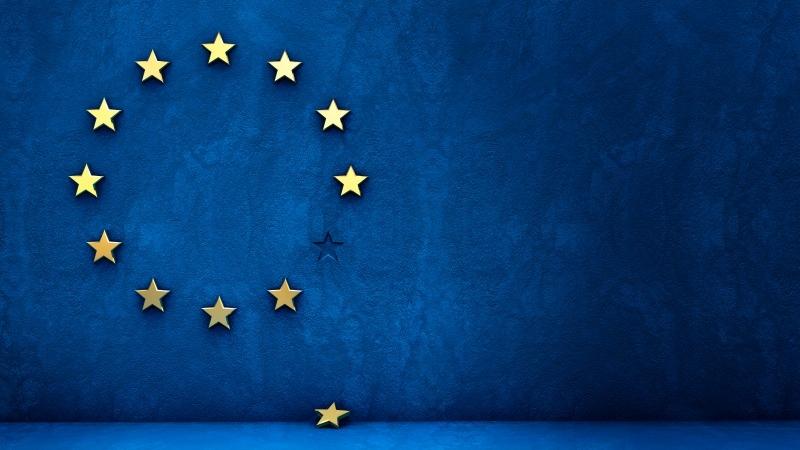
Mass demonstrations for protesting the election of Serj Sargsyan, the decade-long President of Republic of Armenia, as the new Prime Minister following the amendments in the Constitution succeeded in bringing his downfall. People’s power effectively nullified the intention of paving the path of Sargsyan to perpetuate his grip.
The expectations of Sargsyan and Republican Party of Armenia could not be achieved due to the outburst of the mass protests against the government starting even before the appointment of the ex-President to the position of Prime Minister. On the April, 17 Serj Sargsyan was elected by the Parliament as the Prime Minister of Armenia. He could retain in this position only six days. People gathering in the Republic Square in Yerevan, the epicenter of mass riots, celebrated Sargsyan’s resignation on 23rd April, a day after his meeting with the leader of the opposition, Nikol Pashinyan. During the meeting broadcasted live on Television Sargisyan, seemed stubborn on his position, scorning Pashinyan’s demands for his urgent resignation. Referring to the low number of the seats of Pashinyan’s party in the Parliament and threatening the opposition leader, he expected to overbear his opponent. The subsequent actions taken by the government like detaining Pashinyan reminded the suppressions of the authoritarian regimes of the Soviet era.
Nonetheless, Sargsyan, the once Defense Minister, PM and the President of Armenia surprised the international community by stepping back at the 11th day of mass protests with releasing a statement for resignation through the unexpected admission of the faults: “I was wrong and Pashinyan was right.”
His resignation triggered a number of issues related to the future of this country. The smooth surrender of Sargsyan from his power can be considered as the first round of the anticipated changes. Indeed the questions whether the expectations of the masses in the squares and streets as well as the possibilities about the further changes presented by the leaders of the opposition and the defiance of ruling party and government shall overlap or not will define the future of this country.
This analysis with observing the recent events in Armenia, evaluating the statements of the opposition leaders and looking through the reactions coming from the international society will try to assess the current situation in Armenia. The decades-long grip of the Karabakh clan will be touched upon in order to perceive the deterioration they brought to the Armenian society. Later on, the statements of the opposition leaders currently moving the masses in the squares of Armenian cities will be analyzed for depicting the possible domestic and foreign politics. There are a number of scenarios related to the future of Armenia, thus at this part of the article some of them are going to be mentioned. The reactions coming from the decisive actors of the international society like the US, Russia and EU will also be considered. Lastly, the potential repercussions of the Armenian governmental change to the region will be taken up.
What do the masses in the Armenian streets want? Karabakh clan.
Armenians, the people of a country tarnished with corruption, poor, economically, politically and militarily dependent on Russia flooded the streets for declaring their dissatisfaction of their country’s current position. They protested corruption, abuses of human rights, unfair business sphere, closed borders with the neighboring Azerbaijan and Turkey impeding from the better integration to the international community and overall worsened the situation of the country since its establishment. By making the choice of not compromising in the negotiations over the peaceful solution of Nagorno Karabakh conflict with Azerbaijan, Armenia drew its fate as the “isolated state” of the region. Certainly, this choice gradually raised its economic blockade and further reliance on Russia.
The exacerbation of the economic difficulties was also reflected on the political scene of Armenia, turning the governments more corrupt and repressive. Regardless of the changes on the names of candidates for the positions of President or Prime Minister, it has been two decades that only one party – Republican Party of Armenia (RPA) – ruled Armenia.
The elite of RPA is mostly labeled as “Karabakh clan”. This group is known for receiving special treatment by the political elite in all spheres of the society due to their background. Not surprisingly, the term of “karabakhization” seized the Armenian agenda for decades of RPA rule. Even the first President of Armenia Levon Ter-Petrossian accused the leaders of Republican Party, Kocharian and Sargsyan for being members of Karabakh clan that possesses the bigger portion of the cake. It has been generally believed that Karabakh Armenians with utilizing government’s favoritism acquired important positions not only in the political, but also in the business spheres.
The editor-in-chief of Aravat newspaper, Aram Abramian wrote in his analysis referring to the Karabakh clan that only 20-30 families of oligarchs could profit, become rich and obtain a number of opportunities, evading taxes and customs under the shelter of the RPA. On the other hand, he accuses the Karabakh clan of being too pro-Russian: “Karabakhians are more favorably oriented to Russia, likely to speak Russian and less religious than Armenians[1]”.
This group was also blamed of playing the Karabakh card for maintaining the power. With aggressive attitude toward Azerbaijan and sensitive rhetoric about the victimization of Armenians in the conflict continuing with the neighboring state, the Armenian governments under Kocharyan and Sargsyan tried to impose their own legitimacy.
The notion that the government plays Karabakh card in order to benefit the narrow circle of people has been widely spread among the Armenian population. The uncompromised approach toward the solution of the Nagorno Karabakh conflict hindering Armenia from regional and global integration with organizing its relations only through Iranian and Georgian lines was evaluated as the tools of profiting the business monopolies for maneuvering their business affairs. They believed that open borders with Europe and Asia allowing free trade and accelerated economic integration may create obstacles to the clan to control the flow of goods and money they once monopolized.
Consequently, the resentment of the Armenian society gathered gradually during the RPA period due to the deficits and insufficiencies in the economic-political structure culminated with the Sargsyan’s attempt to extend the term of his power by becoming a new Prime Minister of Republic of Armenia.
This attempt led thousands of people to the Republic Square of Yerevan that consequently ended with the resignation of Serj Sargsyan. But can it be considered as the end of Karabakh clan? Does the demolishing the power of Karabakh clan will solve the problems of Armenia?
What is next? Nikol Pashinyan and his views about the future of Armenia.
Armenia’s weak economy for almost three decades resulted in poverty, with 18.8% unemployment rate and the youth fleeing to other countries with a hope to get a chance to have a better life. The remittances coming from Armenian Diaspora and politico-military support provided by Russia sustained the rule of RPA. Thus, the question appears whether the withdrawal of Sargsyan may be considered as the end of all these miseries of Armenian society.
 Nikol Pashinyan, the MP at Armenian Parliament from the “Elk” bloc is the leader of the masses in the Republic Square of Yerevan which aim to achieve to topple down the RPA government as the ultimate goal. The 42 year old organizer of recent unrests has continued his struggle against Sargsyan since the latter’s first election as the president in 2008.
Nikol Pashinyan, the MP at Armenian Parliament from the “Elk” bloc is the leader of the masses in the Republic Square of Yerevan which aim to achieve to topple down the RPA government as the ultimate goal. The 42 year old organizer of recent unrests has continued his struggle against Sargsyan since the latter’s first election as the president in 2008.
In the short meeting with Sargsyan broadcasted live on TVs Pashinyan seemed insistent about the former’s leave. “We are here for discussing the conditions of your resignation[2]”, he stated. After achieving the departure of Sargsyan, the broader strategy of the opposition was presented to the public by Pashinyan in his press conference held on 24th March. He indicated that the first round of the full and smooth transition of power was achieved as a consequence of Sargsyan’s withdrawal from the power, but it is not the end. By coining the public movement as the “Velvet Revolution” Pashinyan stated that they target to restructure the system, to impede Sargsyan to maintain de-facto authority. Accordingly, till the designation of the “people’s candidate” as a new Prime Minister after the elections, the leader of “Elk” bloc also emphasized the importance of full capitulation of RPA government. With calling for the continuation of the public disobedience and underlying that the new elections cannot take place under RPA rule, he stressed that: “The RPA no longer has authority, it is a ghost. The people of Armenia and Diaspora are our guarantee. No other power can resist us[3].”
Pashinyan builds his platform on the critics of Sargsyan’s regime and represents himself as the “prophet” who have sent for rescuing Armenian people from the tyranny of Karabakh clan. Nevertheless, it is not clear yet what is going to be suggested differently by Pashinyan’s Party.
What will be different? “The old wine in a new bottle”?
Pashinyan’s “Civil Contract” party with two other parties formulated “Elk” bloc which has 9 seats out of 105 in the current parliament of Armenia. This bloc is known as the liberal opposition preferring European integration. Interestingly the translation of the word “elk” in Armenian means “exit” that is mainly perceived by some analysts[4] as leaving the Russian influence. Nevertheless, Pashinyan’s recent statements about Russia show that if the “Elk” bloc comes to the power, differently from Georgia and Ukraine cases the foreign affairs of Armenia are not going to be dramatically transformed.
He emphasized in the press conference that friendly relations with Russia will be maintained friendly, and there is not a plan about immediate withdrawal from the Collective Security Treaty Organization (CSTO). By underlying the problems with Azerbaijan and Turkey Pashinyan continued that the existence of the Russian military bases is inevitable for Armenia’s national security.
In his brief explanation about the foreign policy of “reformed” Armenia, it seems that there will not be major changes in Armenıa’s international relations. The opinion of Kremlin still maintains its previous salience for Armenia. The new potential political authority is not interested in turning the old “enemies” into friends. As Thomas de Waal wrote in his article in Foreign Policy magazine the public movement in Armenia does not bear any geopolitical repercussions beyond its borders or any sign of Armenian split with Russia[5]. Though there may be some attempts on lessening the economic reliance from Russia, it cannot be seen in the military domain because the new government is not expected to bring any concessions to the Nagorno Karabakh conflict.
The depiction of the internal character of the protests is related to the will of the opposition to differentiate their movement from the “Colored Revolutions” of Georgia and Ukraine. Indeed the latter ones are evaluated by Russian policy-makers and military theorists as a novel version of warfare engineered by Washington and NATO. Pashinyan’s emphasis on genuinely internal roots of the protests with declaring that “neither West, nor Russia” has provoked the “Revolution” ongoing in Armenia can be considered as an attempt to evade the displeasure of Kremlin that is known for its support to RPA’s rule for decades.
Reactions from outside.
As Armenian opposition tries to escape from a slightest hint that may engender the anger of Russia, the latter also surprisingly enough seems “calm” related to the events in Armenia. Differently from the reactions towards other mass movements in post-Soviet region, from the words of Foreign Ministry Spokeswoman Maria Zakharova:“Armenia, Russia is always with you[6]”, it can be discerned that Kremlin is in a wait and see mode. The certainty that the all governments in Armenia will seek cooperation with Russia is reflected in the words of Sergei Tsekov, IR committee member in the upper House of Russian Parliament, who called Armenia as “eternal and reliable friend[7].”
On the other hand, Europe and the USA applauded the peaceful nature of change and welcomed the mass movement with a great hope for bettering the conditions of democracy, human rights, transparency and the rule of law in Armenia. They both declared their support to the constructive dialogue between the current government and the opposition[8].
Future of Armenia
At the time when Parliamentary Speaker Ara Babloyan suggested Armenian MPs to select a new Prime Minister on 1st May, various scenarios about the future of Armenia are being discussed in backstage.
Considering that the opposition requires “unconditional capitulation” of RPA, the holder of 58 seats in the Parliament, the future of these elections seems vague. The first scenario is the persistence of RPA to maintain its position that may lead to the climbing tensions and the use of force towards civilians. The second one is the inability of “people’s candidate” from “Elk” party to gather enough votes from MPs to become PM.
Even in the best option for Armenians rioting in the streets to get rid of the Karabakh clan, the new government led by “Elk bloc” does not seem very promising. Considering that the cracks of Armenian society does not only lie in the internal issues and are also profoundly associated with its foreign policy, the insistence on sustaining previous views on conducting international relations may not bring Armenian society further. Not only cosmetic changes in the internal sphere, but also excelled relations with neighboring countries for solving its problems hindering the participation in the regional and international projects may rescue Armenian people from the real consequences that Karabakh clan once brought upon them. Consequently, the anticipated democratization in the political sphere inside should be reflected on the foreign affairs, otherwise political transitions in Armenia may be considered as “old wine in a new bottle.”
[1] Whitmore, Brian. "Crisis Spotlights 'Karabakh Clan'." RadioFreeEurope/RadioLiberty. April 08, 2008. Accessed April 27, 2018. https://www.rferl.org/a/1079586.html.
[2] Al Jazeera. "Armenian Opposition Leader Nikol Pashinyan Detained." Armenia News | Al Jazeera. April 22, 2018. Accessed April 27, 2018. https://www.aljazeera.com/news/2018/04/armenian-pm-sargsyan-walks-meeting-opposition-180422063600399.html.
[3] Gadarigian, Hrant. "Nikol Pashinyan to International Press: "Our Movement Isn't Pro-West or Pro-Russia."" Hetq - News, Articles, Investigations. April 24, 2018. Accessed April 27, 2018. http://hetq.am/eng/news/87979/nikol-pashinyan-to-international-press-our-movement-isnt-pro-west-or-pro-russia.html.
[4] Кириллова, Анна. "Чисто американская работа: Марков считает «армянским майданом» отставку Саргсяна на фоне протестов." Федеральное агентство новостей No.1. April 23, 2018. Accessed April 27, 2018. https://riafan.ru/1050005-chisto-amerikanskaya-rabota-markov-schitaet-armyanskim-maidanom-otstavku-sargsyana-na-fone-protestov.
[5] Waal, Thomas De. "Sometimes Armenian Protests Are Just Armenian Protests." Foreign Policy. April 23, 2018. Accessed April 27, 2018. http://foreignpolicy.com/2018/04/23/sometimes-armenian-protests-are-just-armenian-protests/.
[6] "«Армения, Россия всегда с тобой!»: Захарова прокомментировала события в Ереване." НТВ. April 23, 2018. Accessed April 27, 2018. http://www.ntv.ru/novosti/2009043.
[7] Eckel, Mike. "A 'Color Revolution' In Armenia? Mass Protests Echo Previous Post-Soviet Upheavals." RadioFreeEurope/RadioLiberty. April 24, 2018. Accessed April 27, 2018. https://www.rferl.org/a/armenia-mass-protests-echo-previous-post-soviet-upheavals-colored-revolutions/29189559.html.
[8] "Delegation of the European Union to Armenia and EU Member States' Embassies in Armenia: "We Applaud Peaceful Nature of Change"." Hetq - News, Articles, Investigations. April 25, 2018. Accessed April 27, 2018. http://hetq.am/eng/news/87984/delegation-of-the-european-union-to-armenia-and-eu-member-states-embassies-in-armenia-we-applaud-peaceful-nature-of-change.html.
© 2009-2025 Center for Eurasian Studies (AVİM) All Rights Reserved
No comments yet.
-
 WHAT ARE THE PROSPECTS FOR ARMENIA? THE END OF “KARABAKH CLAN” OR “OLD WINE IN A NEW BOTTLE”?
WHAT ARE THE PROSPECTS FOR ARMENIA? THE END OF “KARABAKH CLAN” OR “OLD WINE IN A NEW BOTTLE”?
Nigar SHİRALİZADE 27.04.2018 -
 100 YEARS OLD “YOUNG” STATES OF SOUTH CAUCASUS. LESSONS FROM AZERBAIJAN DEMOCRATIC REPUBLIC
100 YEARS OLD “YOUNG” STATES OF SOUTH CAUCASUS. LESSONS FROM AZERBAIJAN DEMOCRATIC REPUBLIC
Nigar SHİRALİZADE 11.06.2018 -
 BOOK REVIEW: SHATTERING EMPIRES. THE CLASH AND COLLAPSE OF THE OTTOMAN AND RUSSIAN EMPIRES 1908–1918”
BOOK REVIEW: SHATTERING EMPIRES. THE CLASH AND COLLAPSE OF THE OTTOMAN AND RUSSIAN EMPIRES 1908–1918”
Nigar SHİRALİZADE 24.09.2018 -
 BOOK REVIEW: AZERBAIJAN DIARY: A ROGUE REPORTER'S ADVENTURES IN AN OIL-RICH, WAR-TORN, POST-SOVIET REPUBLIC
BOOK REVIEW: AZERBAIJAN DIARY: A ROGUE REPORTER'S ADVENTURES IN AN OIL-RICH, WAR-TORN, POST-SOVIET REPUBLIC
Nigar SHİRALİZADE 20.07.2018
-
 APRIL 24 AND THE IGNORED FIRST WORLD WAR
APRIL 24 AND THE IGNORED FIRST WORLD WAR
Hazel ÇAĞAN ELBİR 30.04.2024 -
 2025 MUNICH SECURITY CONFERENCE AND THE NECESSITY OF CONSTRUCTIVE EURASIANISM
2025 MUNICH SECURITY CONFERENCE AND THE NECESSITY OF CONSTRUCTIVE EURASIANISM
Teoman Ertuğrul TULUN 28.02.2025 -
 THOUGHTS ON TURKEY – EU RELATIONS AFTER BREXIT
THOUGHTS ON TURKEY – EU RELATIONS AFTER BREXIT
Hazel ÇAĞAN ELBİR 02.01.2020 -
 THE CURRENT STATE OF RELATIONS BETWEEN KAZAKHSTAN-TURKEY
THE CURRENT STATE OF RELATIONS BETWEEN KAZAKHSTAN-TURKEY
Özge Nur ÖĞÜTCÜ 13.09.2017 -
 PEACE TREATY OF LAUSANNE AND THE END TO ARMENIAN ASPIRATIONS
PEACE TREATY OF LAUSANNE AND THE END TO ARMENIAN ASPIRATIONS
Teoman Ertuğrul TULUN 22.07.2016
-
25.01.2016
THE ARMENIAN QUESTION - BASIC KNOWLEDGE AND DOCUMENTATION -
12.06.2024
THE TRUTH WILL OUT -
27.03.2023
RADİKAL ERMENİ UNSURLARCA GERÇEKLEŞTİRİLEN MEZALİMLER VE VANDALİZM -
17.03.2023
PATRIOTISM PERVERTED -
23.02.2023
MEN ARE LIKE THAT -
03.02.2023
BAKÜ-TİFLİS-CEYHAN BORU HATTININ YAŞANAN TARİHİ -
16.12.2022
INTERNATIONAL SCHOLARS ON THE EVENTS OF 1915 -
07.12.2022
FAKE PHOTOS AND THE ARMENIAN PROPAGANDA -
07.12.2022
ERMENİ PROPAGANDASI VE SAHTE RESİMLER -
01.01.2022
A Letter From Japan - Strategically Mum: The Silence of the Armenians -
01.01.2022
Japonya'dan Bir Mektup - Stratejik Suskunluk: Ermenilerin Sessizliği -
03.06.2020
Anastas Mikoyan: Confessions of an Armenian Bolshevik -
08.04.2020
Sovyet Sonrası Ukrayna’da Devlet, Toplum ve Siyaset - Değişen Dinamikler, Dönüşen Kimlikler -
12.06.2018
Ermeni Sorunuyla İlgili İngiliz Belgeleri (1912-1923) - British Documents on Armenian Question (1912-1923) -
02.12.2016
Turkish-Russian Academics: A Historical Study on the Caucasus -
01.07.2016
Gürcistan'daki Müslüman Topluluklar: Azınlık Hakları, Kimlik, Siyaset -
10.03.2016
Armenian Diaspora: Diaspora, State and the Imagination of the Republic of Armenia -
24.01.2016
ERMENİ SORUNU - TEMEL BİLGİ VE BELGELER (2. BASKI)
-
AVİM Conference Hall 24.01.2023
CONFERENCE TITLED “HUNGARY’S PERSPECTIVES ON THE TURKIC WORLD"









